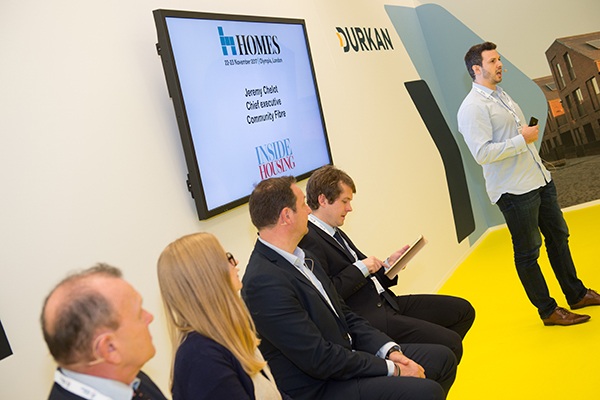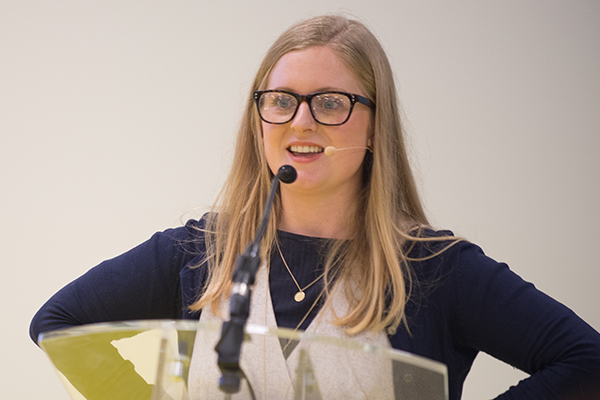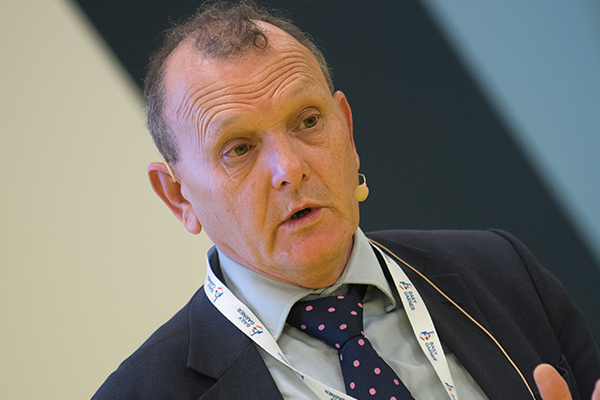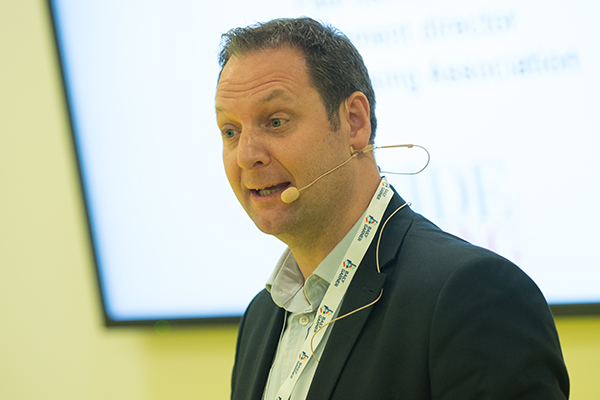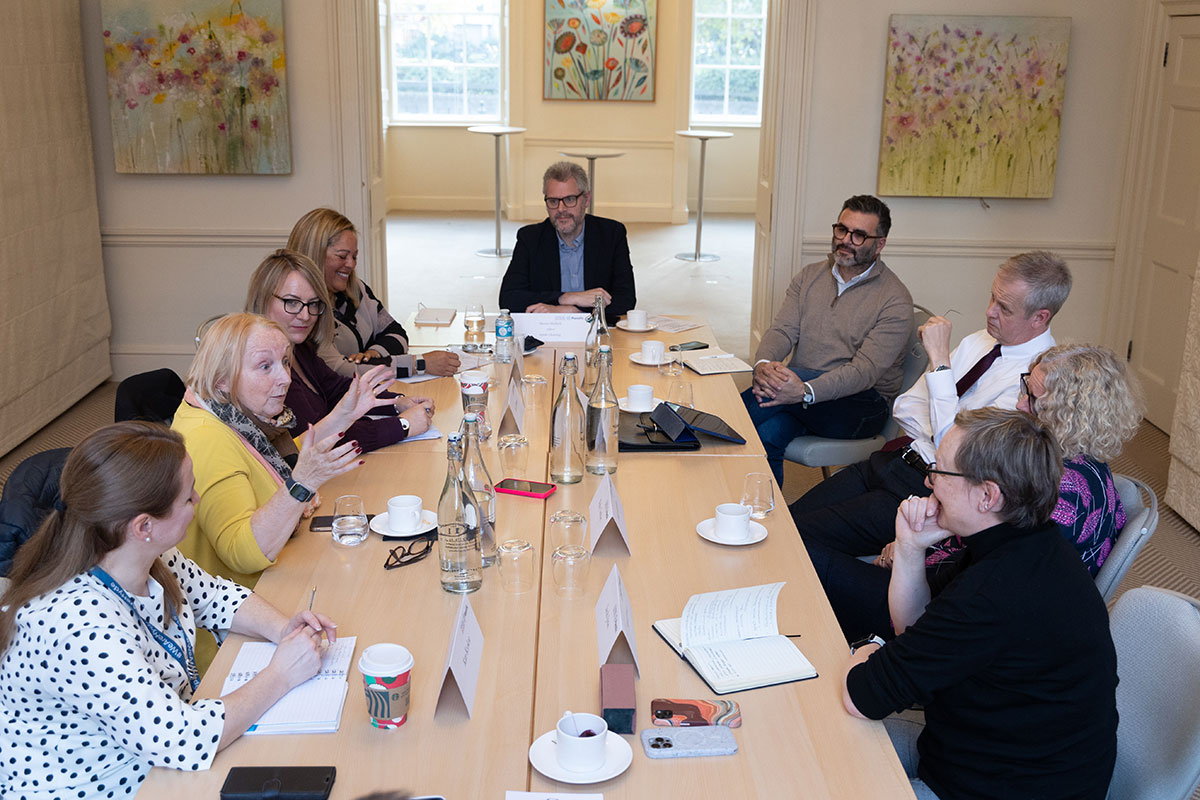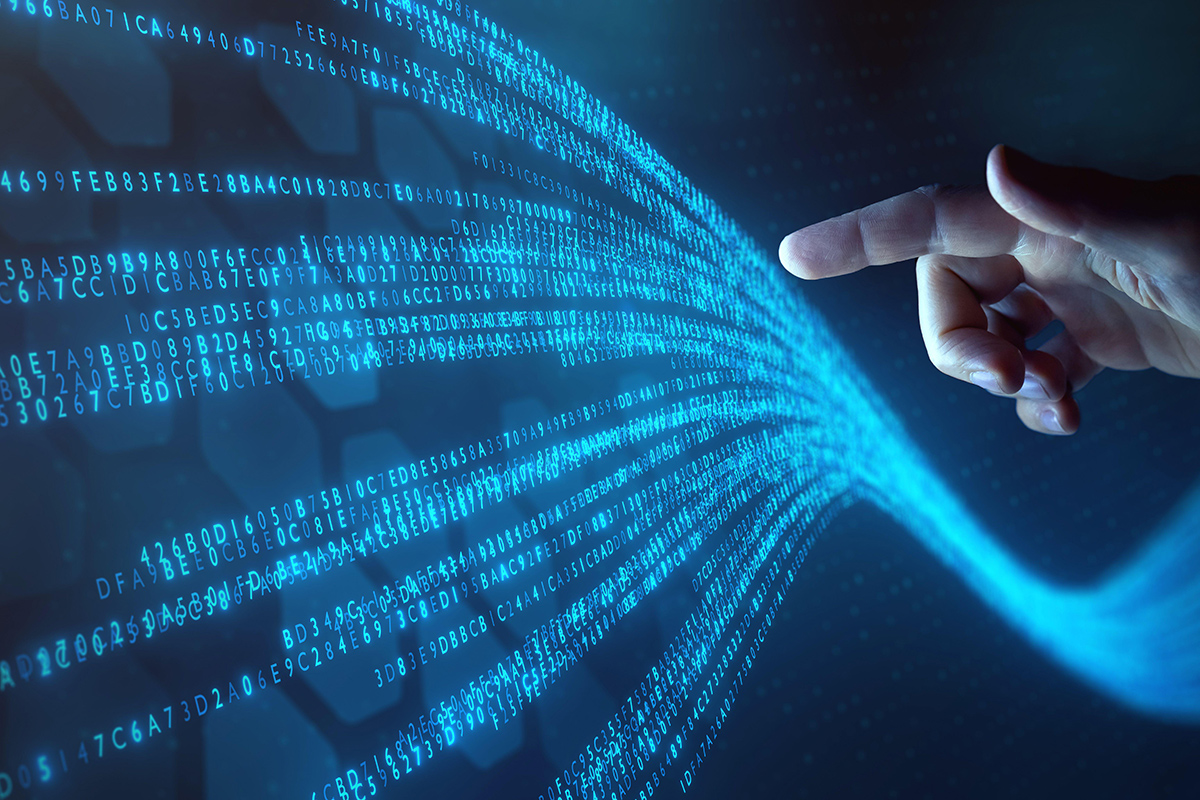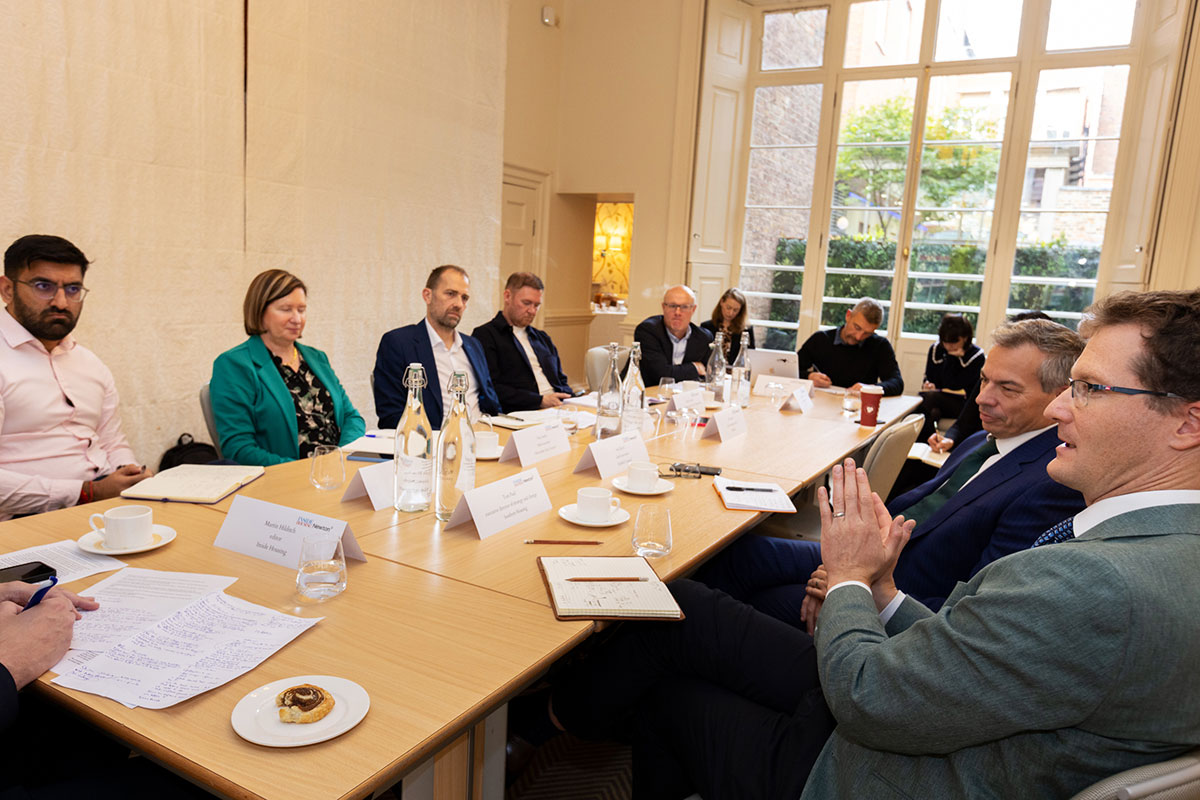Getting up to speed
How can social landlords open the gates to their tenants’ digital futures? Inside Housing and Community Fibre explore the value of digital connectivity for tenants and landlords. Photography by Sira Studio
In association with:

“The way we shop, pay bills and work has been completely reinvented by digital technology. Yet there is a significant minority of households that are not online,” says Carl Brown, assistant editor – digital and strategy at Inside Housing. He’s setting the context for Inside Housing’s breakfast briefing with high-speed broadband provider Community Fibre.
The political imperative to digitally connect communities is now strong, Mr Brown adds, with chancellor Philip Hammond using the Autumn Budget to announce a £190m Local Full Fibre Networks Challenge Fund. Local areas will be able to bid to the fund for monies to support faster roll-out of the technology.
The briefing hears there is evidence that consumer demand for high-speed internet access is shaping the housing market. Sara Kelly, principal policy officer for digital connectivity at the Greater London Authority (GLA), cites 2014 research from Rightmove which suggested slow broadband can reduce a property’s price by up to 20%. The online estate agent says buyers now view high-speed broadband as an essential utility, alongside electricity and water.
So how can social landlords help secure high-speed internet access for their tenants? And what benefits could such access offer – for both parties?
“If you want to know how broadband can improve the lives of people in social housing, then I am your example,” says Jeremy Chelot, chief executive of Community Fibre.
Mr Chelot explains that around 20 years ago in Paris, where he grew up, local authorities started to encourage companies to roll out full-fibre services across all their properties.
Today, those homes have a choice of broadband providers and a quality of service that far exceeds the digital experience in the UK. Residents not only have speedy online access to shops, schools and community services, but to their landlords too.
Bespoke service
Taking the mic, Paul Ellis, former cabinet member for housing at Wandsworth Council, says connectivity is the first step to digitally engaging tenants.
“About four years ago, our research showed that on our estates only 30% of homes were online. So that meant the vast majority of our residents couldn’t communicate with us in the way we wanted – even if they wanted to.
“So we started to think about how we could encourage residents to take up broadband access. Our initial thought was to approach one of the big providers. But what we soon discovered is that while the big providers are good at what they do, they’re not flexible enough for the sort of operation that we run as social landlords.”
The council therefore decided to partner with Community Fibre, in a project which has already seen full-fibre broadband rolled out to 5,500 homes.
“Its service is tailored,” says Mr Ellis. “You can’t have those conversations with the big providers.”
Genesis Housing Association has embarked on similar work. Paul Jameson, the organisation’s procurement director, tells the briefing that he is a “passionate connectivity advocate”. He suggests high-speed internet can help social tenants get full benefit from the technology they already have.
“Whether or not our residents have a computer, they more than likely have a mobile phone,” he says. “So how do we get them to use that technology to work with us?
“Everybody gets excited about developing amazing customer portals and apps, and people overlook connectivity. It’s through connectivity that we can get people working with us in social housing.”
Once the digital infrastructure is in place, that is the time that landlords should roll out innovative digital services to build a dialogue with residents, he says.
“While the big providers are good at what they do, they’re not flexible enough for social landlords.”
Paul Ellis, former cabinet member for housing, Wandsworth Council
So what is holding social landlords back? Mr Jameson suggests developers have become accustomed to working with BT and Sky, which are inclined to impose a one-size-fits-all solution rather than the tailored set-ups that will suit diverse communities.
Ms Kelly reports that some developers are unaware they can use anyone else but BT. She adds that the London mayor’s office is now working to spell out the “complexity of the market” to both landlords and developers, and is calling for new build developments to be designed to offer a choice of providers.
The GLA’s aim is to create intelligent customers throughout the digital supply chain, from developers and social landlords to end users, Ms Kelly says. “We’re identifying areas of need in the market, alongside local authorities and providers to meet that need.”
For Community Fibre, community need is a key focus, according to Mr Chelot. “We work as a partner. When we deploy in an area, a priority for us is to make sure as many people get online as possible, and to do that we make it as affordable as we can.”
He stresses that as a ‘to the door’ full-fibre service, his company sidesteps the copper wiring that BT still uses to link homes to a supply grid that slows down connectivity. As such, customers do not pay line rental to BT, significantly reducing the cost of the package, he adds.
Transforming communities
In partnership with a landlord, Community Fibre works to identify areas of need in which to launch its services. Once established, these once digital-free zones become supply hubs that are then linked to form a grid, and the service is rolled out to properties in between.
“We also nurture our relationship with a community,” he adds. “We offer training, take part in events, and where we can, create jobs. All of our support services are delivered locally.”
Questions from the floor draw out more information on just how the company works in local areas. Mr Chelot explains that the firm will work with any social landlord, regardless of size. No procurement process is required and service provision is not reliant on grants or additional funding.
He is very clear that social landlords have the power to champion the roll-out of high-speed digital services, and in so doing transform communities.
“Until you have the right digital infrastructure,” he says, “you cannot get communities to fulfil their potential in the 21st century.”
